The Doxa Sub300 50th Anniversary – A step back in time to the glory days of the dive watch
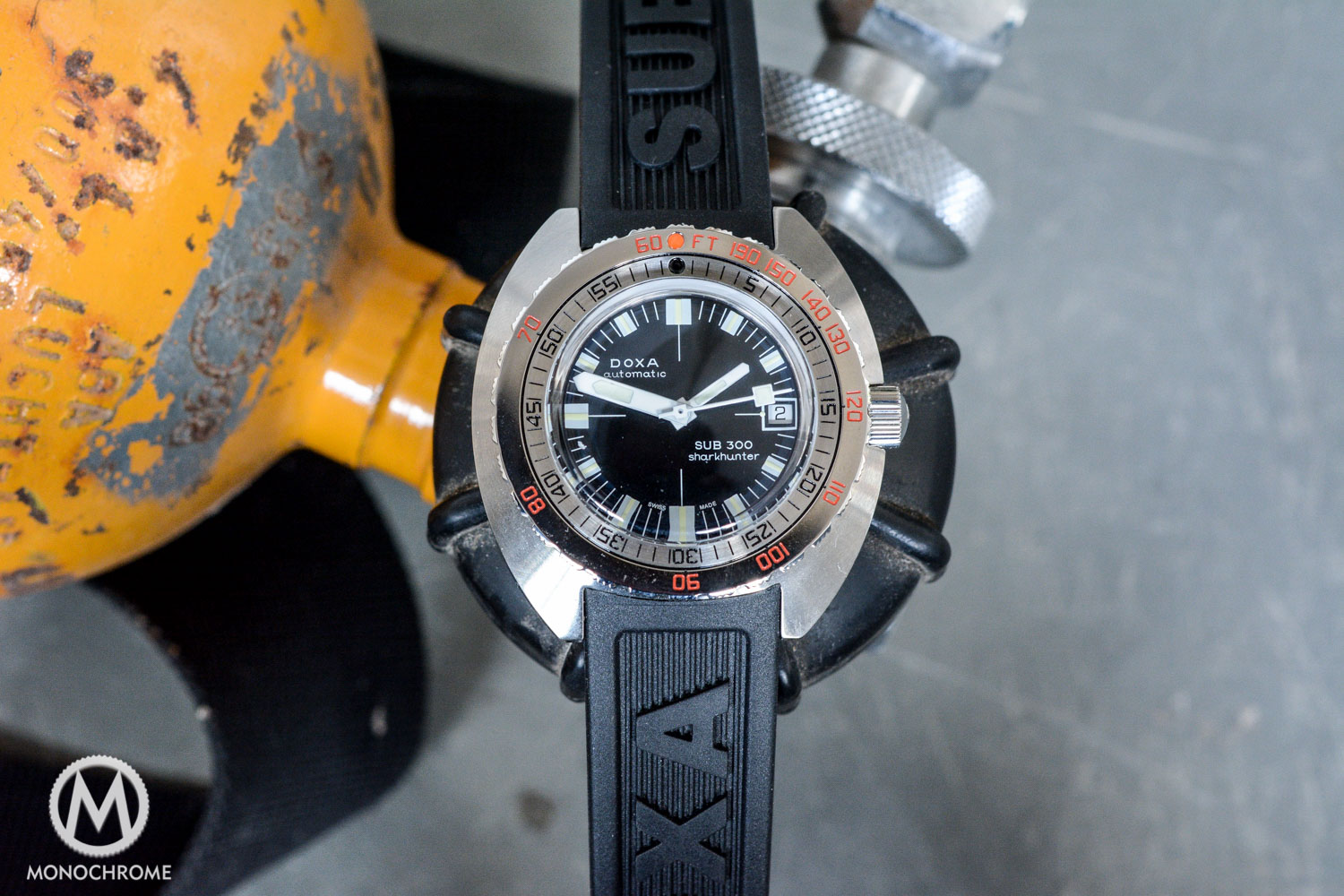
At Baselworld 2016, Doxa introduced its 50th Anniversary Sub300 model, a great dive watch with unquestionable pedigree. So we, at Monochrome, eagerly waited for a prototype to arrive at the HQ for a review. Once a black-dial Sharkhunter variant received, we immediately put it to its paces comparing, debating and discussing about it. That is the purpose of this article: make you understand how important and cool this watch is. However, before I proceed with my assessment, I feel that a short overview of the history of the company is needed to put things into a proper perspective.
Background – Doxa through history
Doxa was founded by Georges Ducommun as Georges Ducommun, Fabriques Doxa in 1889 in Le Locle, Switzerland. The company rose to prominence in 1908 with the introduction of an 8-day watch movement, which offered motorists and aviators a dash-mounted timepiece providing greater ease of reading. Doxa patented an instrument, using this movement, purpose-built to be mounted on cars’ and planes’ dashboards.
Through his connection with the motor industry, Ducommun’s instruments were soon in demand and as a result, the Doxa 8-day power-reserve was to be found in automobiles from many manufacturers, but none so enduring as the mythical Type 35 Bugatti. When Ducommun died in 1936, he was replaced at the helm by Jacques Nardin, grandson of famed Le Locle watchmaker Ulysse Nardin. Doxa continued to produce extremely reliable wristwatches and chronographs, which were used in World War II, mainly by German aviators and other military personnel. After the war, Doxa outfitted the German World Cup football team with gold watches and in 1956 introduced “Grafic”, a line of Bauhaus square watches.
However, and despite its celebrated history, the company is instantly identified today by a project that created one of the most influential dive watches of all time. Mr. Urs Eschle was the product manager of the original Doxa Sub. He worked for Montres Doxa SA from 1956 till 1968, and from 1964 he was “directeur commercial”. He initiated the dive watch project, which led to the Sub, that same year, and decided to start from scratch rather than copying other manufacturers, so he set up a research team with several professional divers and experienced watchmakers. The goals for the research team were clear: developing the first affordable sports diver watch for leisure and professional divers; a reliable, comfortable, purpose-built and highly legible piece of equipment. The Doxa Sub was introduced to the public at Baselworld, in spring 1966 – see our article Historical Perspective – The Doxa Sub 300, The Dive Watch Personified.
However, at the same time, Doxa was facing hard times and the brand joined ASUAG (“Allgemeine Schweizerische Uhrenindustrie AG) in 1968. It was placed in their new Synchron group alongside Ernest Borel and Cyma, and the three brands were marketed together throughout the 1970’s. At the height of the quartz crisis, the Synchron group brands were not financially sustainable and were sold. As of 1978, Doxa belonged to Aubry Freres S.A, however the decline of this historic company was evident. In the early 1980s, the Doxa Sub, the world’s first orange-dial dive watch, disappeared and did not produced for the next 20 years. In 1997, the brand was purchased by the Jenny family of Bienne, Switzerland. The Sub was re-launched in 2002 and the Grafic in 2007. Once again, Doxa focuses on sport and especially dive watches, with the orange-dial Sub prominently featured. In 2014 the brand released an 8 Day “manufacture” movement watch to celebrate its history while this year we witnessed the closest re-edition of the dive watch that started it all: the Doxa Sub300 50th Anniversary.
The Doxa Sub300 50th Anniversary
In 2017, Doxa’s iconic dive watch will celebrate its 50th anniversary, therefore the company chose wisely to respond to the vintage-inspired trend that overshadows the market these past few years. This limited edition version pays homage to the original version of the 300 (no T) Sub. The watch will be powered by a COSC-certified ETA cal. 2824 and will be limited to 300 pieces, for each of the three versions; the Professional (orange), Sharkhunter (black), and Searambler (silver). The crystal has a double bubble shape similar to the original Plexiglas, but instead it is now made from sapphire crystal. The characteristic no-decompression bezel is measured in feet. The diameter of the watch is 42.5mm, its height is 13.40mm, and the dial measures 25,50mm. The case has almost the same dimensions of the original 1967 Sub 300, while on the caseback we see that Doxa chose wisely to retain the original engraved ship rather than the modern Jenny logo. The bracelet is the newly introduced separate bead of rice, with an integrated wetsuit extension and tapers slightly from 22 to 20mm. The retail price is $2590 USD and the pre-order price is $1990 USD while a $500.00 deposit is needed to pre-order. The professional (orange dial) is sold out, while the Sharkhunter (black) and Searambler (silver) are still available via pre-orders.
The differences between this anniversary edition and the original are few. The first one is the height. The original was a bit thinner, mainly due to the shallower caseback used. The second one is the bezel. In the original, we had 60 clicks instead of the 120. The third is the sweep seconds hand. In the original the seconds hand had no lume (introduced on the T variant). The reissue has luminous material on it. Some purists have said they would have preferred no lume and Doxa were undecided up to the very last minute but ultimately, they chose to put a lume hand – which I think it was a wise decision that makes the reissue more practical for daily use (and that’s something compulsory on dive watches under the ISO.6425 norm). Last but not least is the use of a sapphire crystal instead of an acrylic. Doxa debated once again whether to stay entirely true to the original by fitting an acrylic crystal, which has a softer and warmer look, but ultimately preferred to use sapphire instead, in order to protect the watch and its users from the inevitable scratching that would occur on the acrylic bubble crystal. I think that yet again, they chose wisely. The practical advantage of the sapphire usage outweighs a purely aesthetic effect, and I have to say that after all it is very hard to tell the difference between the two.
Other than the above I can honestly state that this Doxa Sub300 50th Anniversary is probably one of the most honest recent re-editions. I love that the dimensions are almost the same, I love the recreation of the vintage fonts on the dial as well as the ship on the caseback and the original crown revival. Definitely, the company did an excellent job by keeping alive the original character. The anniversary edition wears extremely nice on the wrist, even in relation to my own Doxa 1000T. There is an ever-present difference in feel that reminded me instantly the distinction between a Rolex Sub ref.14060 and a ceramic Sub ref.114060. The anniversary’s look, its reduced thickness and also the tapered bracelet create a very pleasing vintage oriented result.
All other Doxa Sub’s in the line seem like modern watches that follow some general guidelines of the company’s DNA, and that is a good thing because evolution is a must. With the Doxa Sub300 50th Anniversary, it feels almost like you went back in time and bought an original 1967 specimen. It is a big difference in feel because after all, any watch is more than the sum of its parts. By staying as closely as possible to the original, the anniversary edition one distinctive characteristic of the brand: small looking dials (and it is even more visible here than on standard editions). At 25.5 millimetres in diameter, the dial is tiny by modern standards, an appearance amplified by the distorting effect of the domed crystal, and also by the massive tonneau case and polished steel bezel. This specificity makes all the difference and provides a more faithful vintage flavour than any other retro diver on the market.
What the brand has done with the Doxa Sub300 50th Anniversary is to create a model that could be a clone of the revolutionary Sub 300 (arguably one of the most influential watches in the history of the dive watch), but with modern materials and slight evolutions. The construction is very serious, like all offerings from the company. More importantly, besides its historical significance, there’s this charming and retro feel, while in parallel being a watch able to handle almost everything.
So, who is it for? I think that the Anniversary Sub is a dive watch that will first please Doxa fans, people who already know the story and love the iconic design. First, the limited edition release means that the watch will be sold to only 900 people – and certainly less, since I personally know collectors who bought all three versions. Then, the smaller than usual looking dial might disappoint someone who is used to watches like the Omega Planet Ocean or a Sinn U1, which look and feel modern. For this audience, I would suggest a 1200T or a 1500T, as wiser choices.
Clearly, this Doxa Sub300 50th Anniversary is uber-cool. If you are considering other dive watches with that same vintage character, like the ZRC Grands Fonds 300, the Triton Subphotique, the Omega Seamaster 300 or the Tudor Black Bay, you might have to look into this Doxa. It is indeed modern in its construction but it acts like a time machine, which instantly takes you back to the 1960’s – and to me, this is they argument here. Each time I looked at it on my wrist I had to reassure myself that this is a modern timepiece and not NOS vintage 300. This diver watch quite simply pays tribute to an era where the mechanical dive watch was king and also to the Doxa team that worked meticulously with the sole purpose to create one of the most influential dive watch designs of all time.
Note: the Sharkhunter we received for review is a prototype so the rubber strap you see is temporary, while there are some changes in the luminous paint.

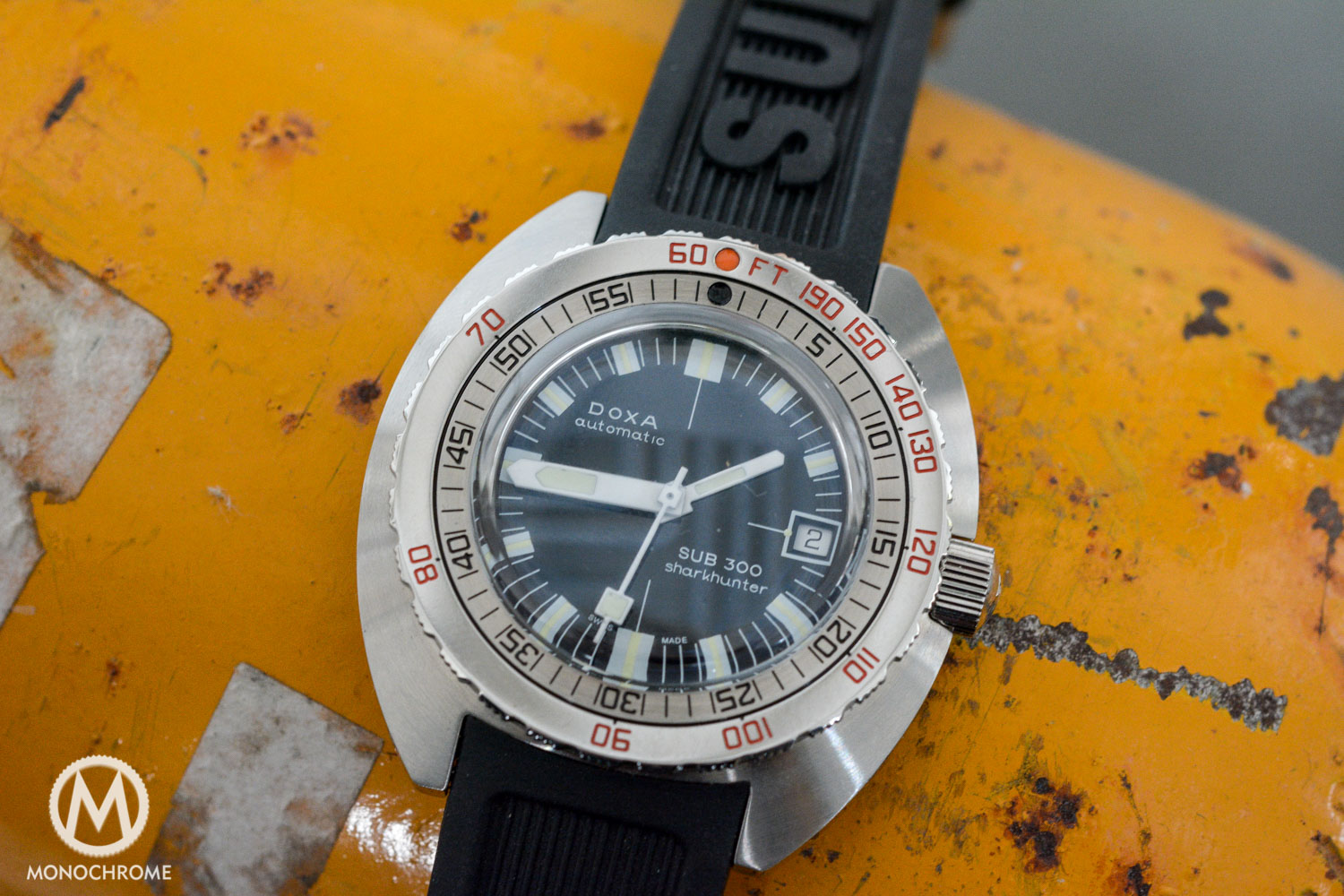
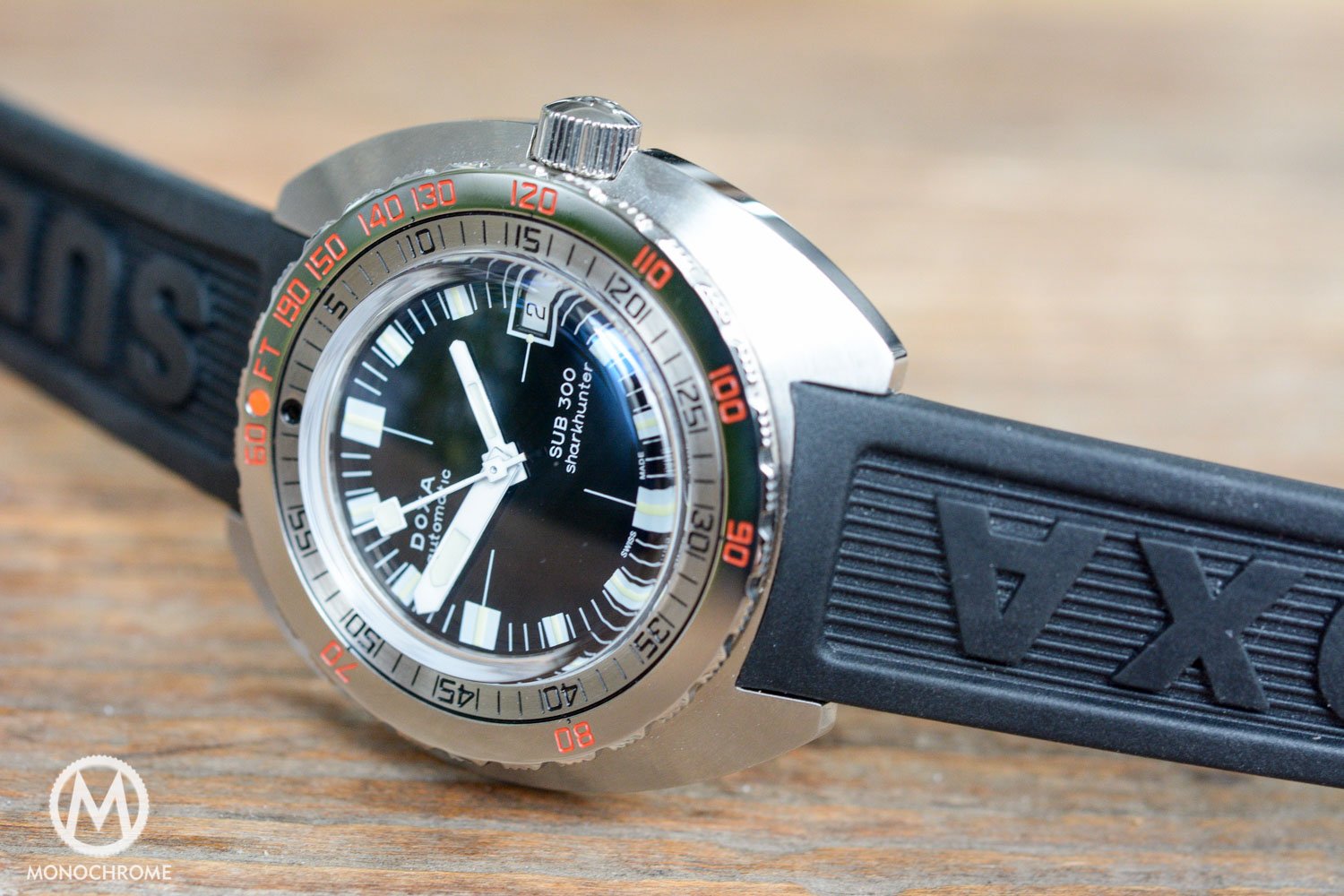
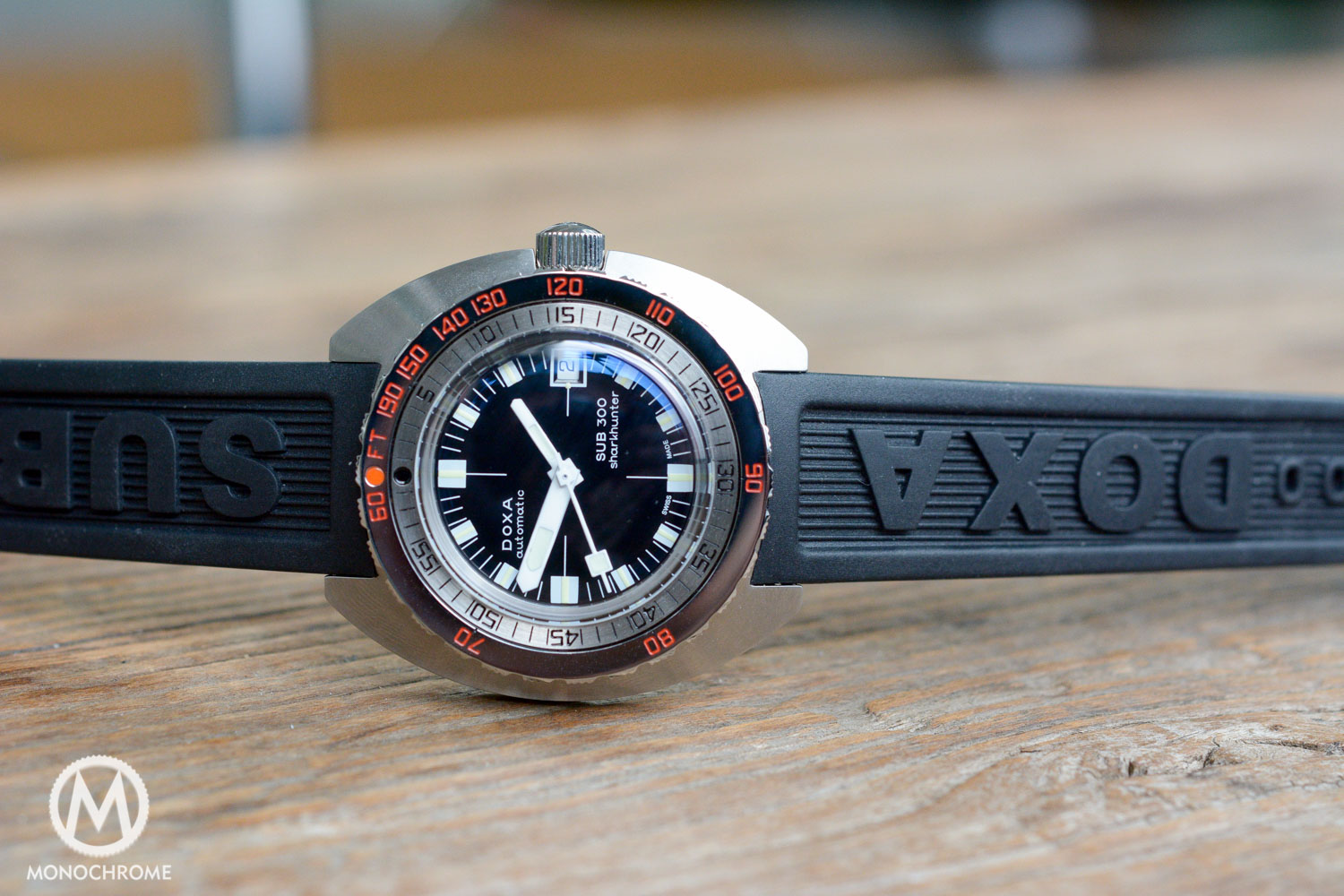
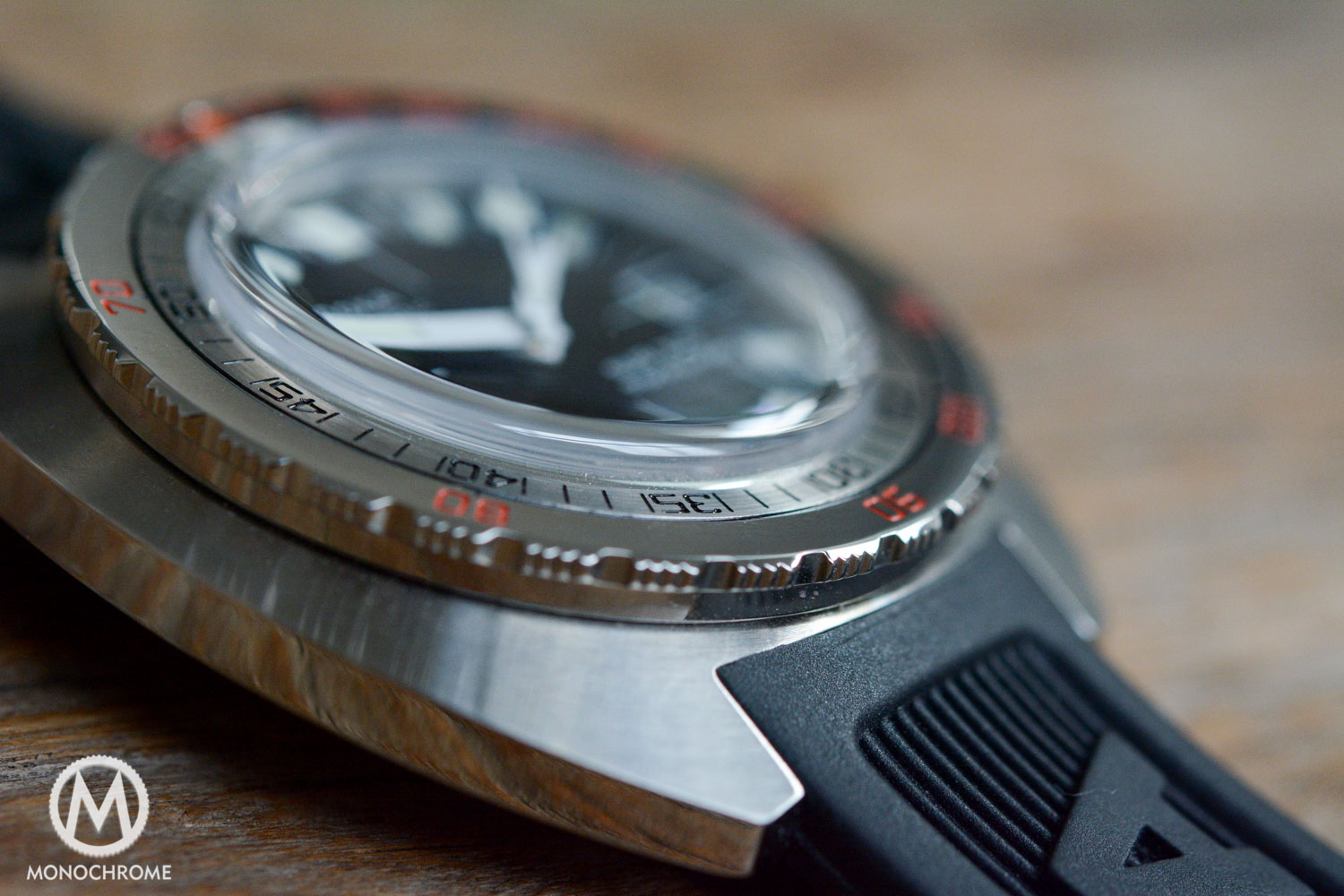
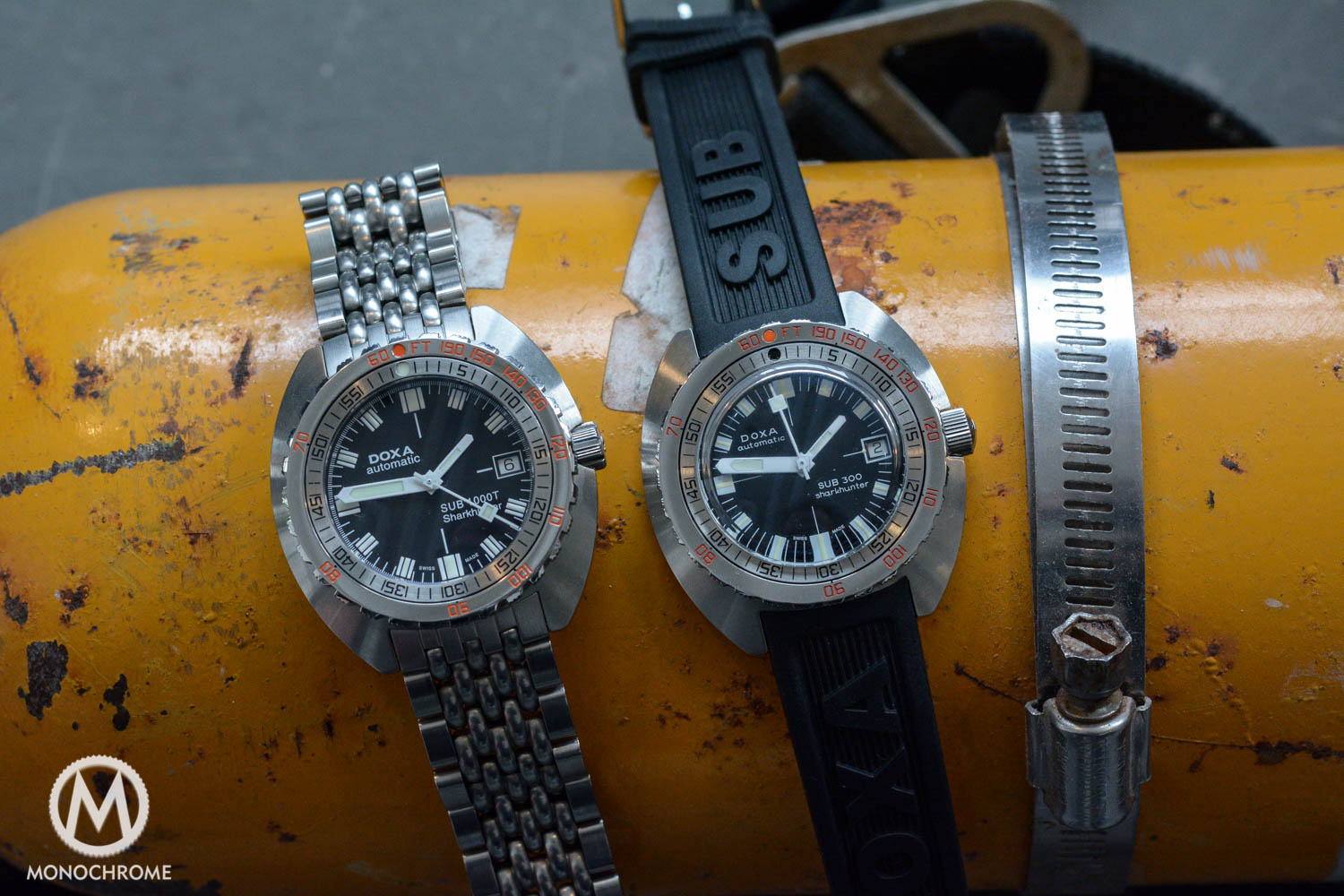
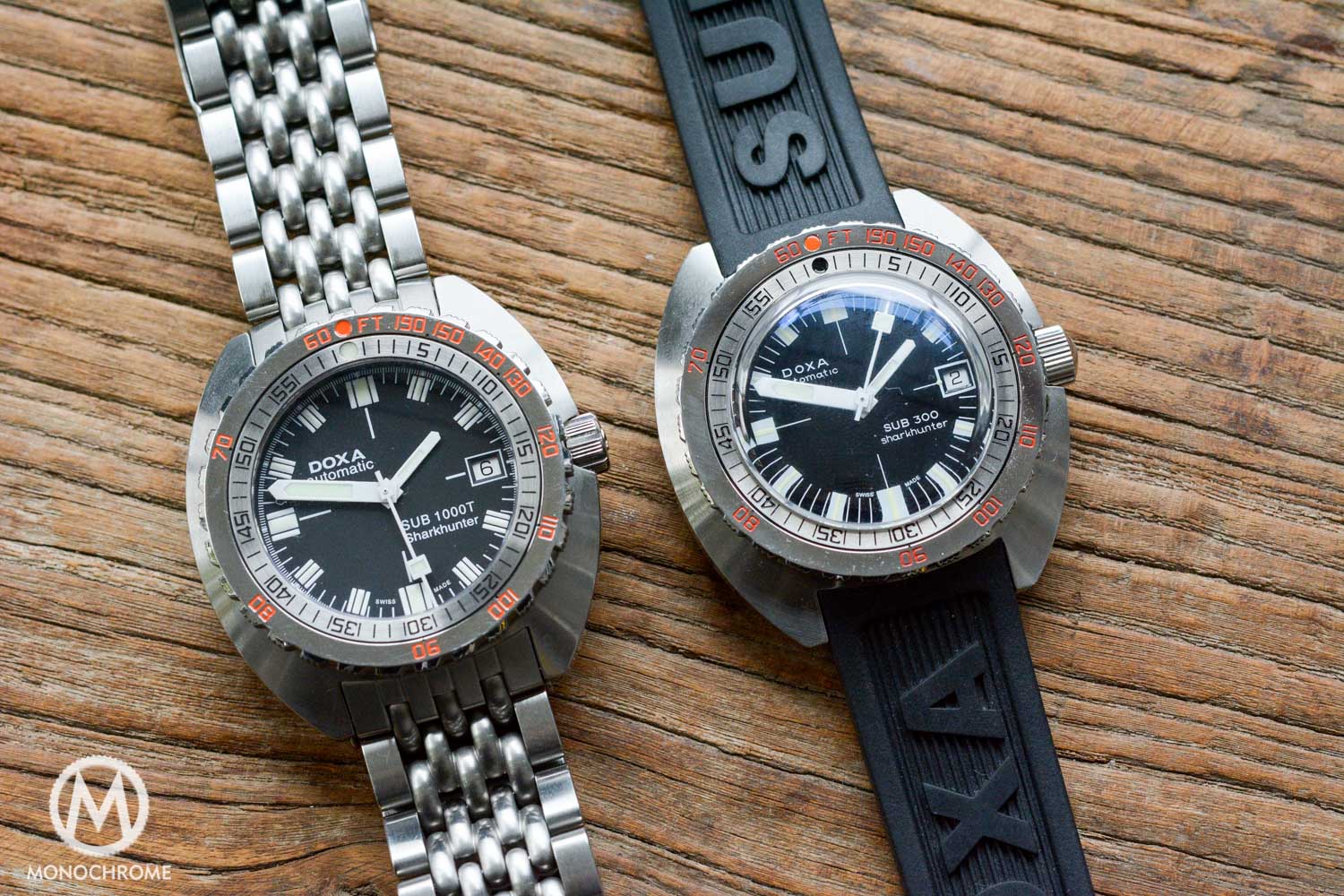
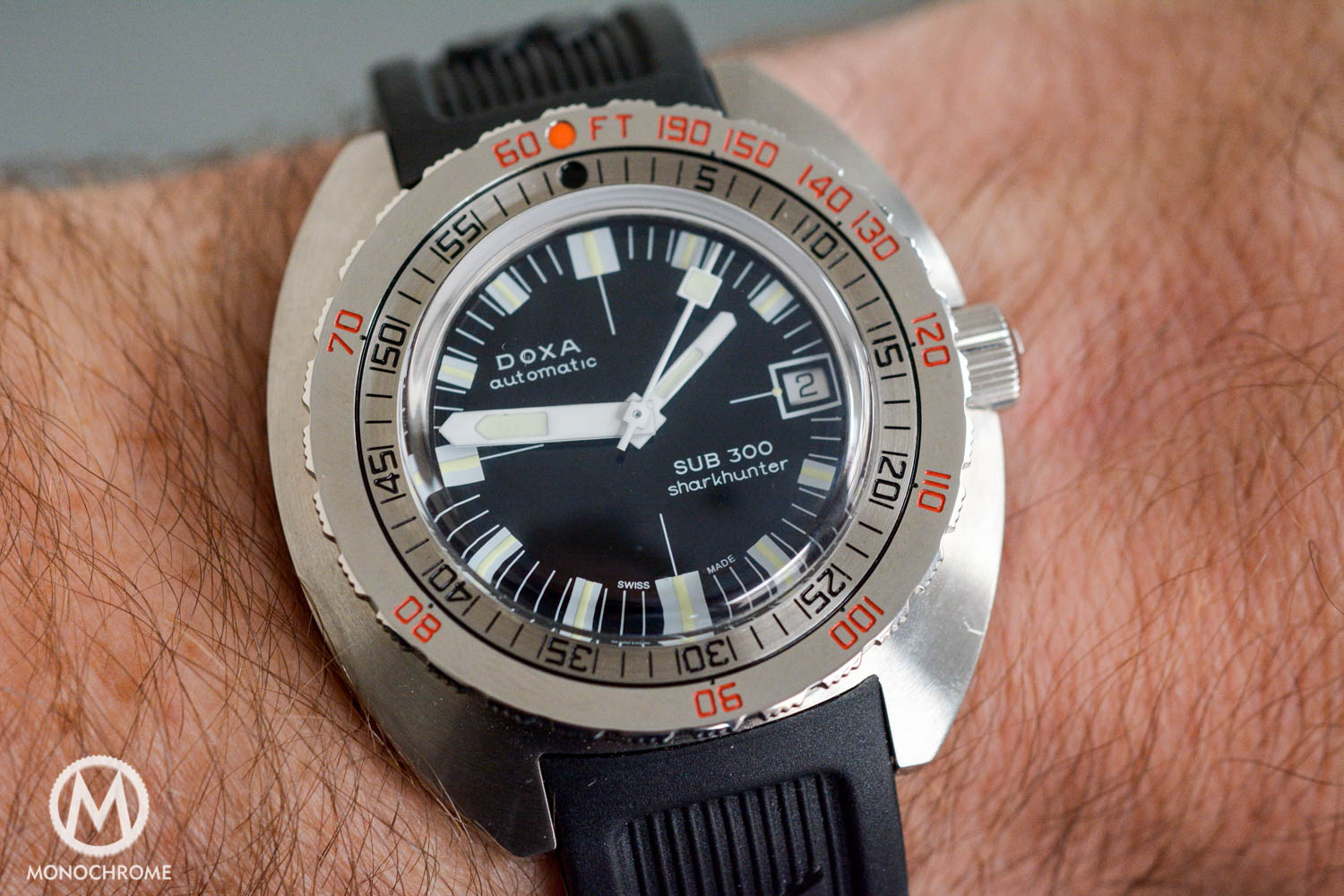

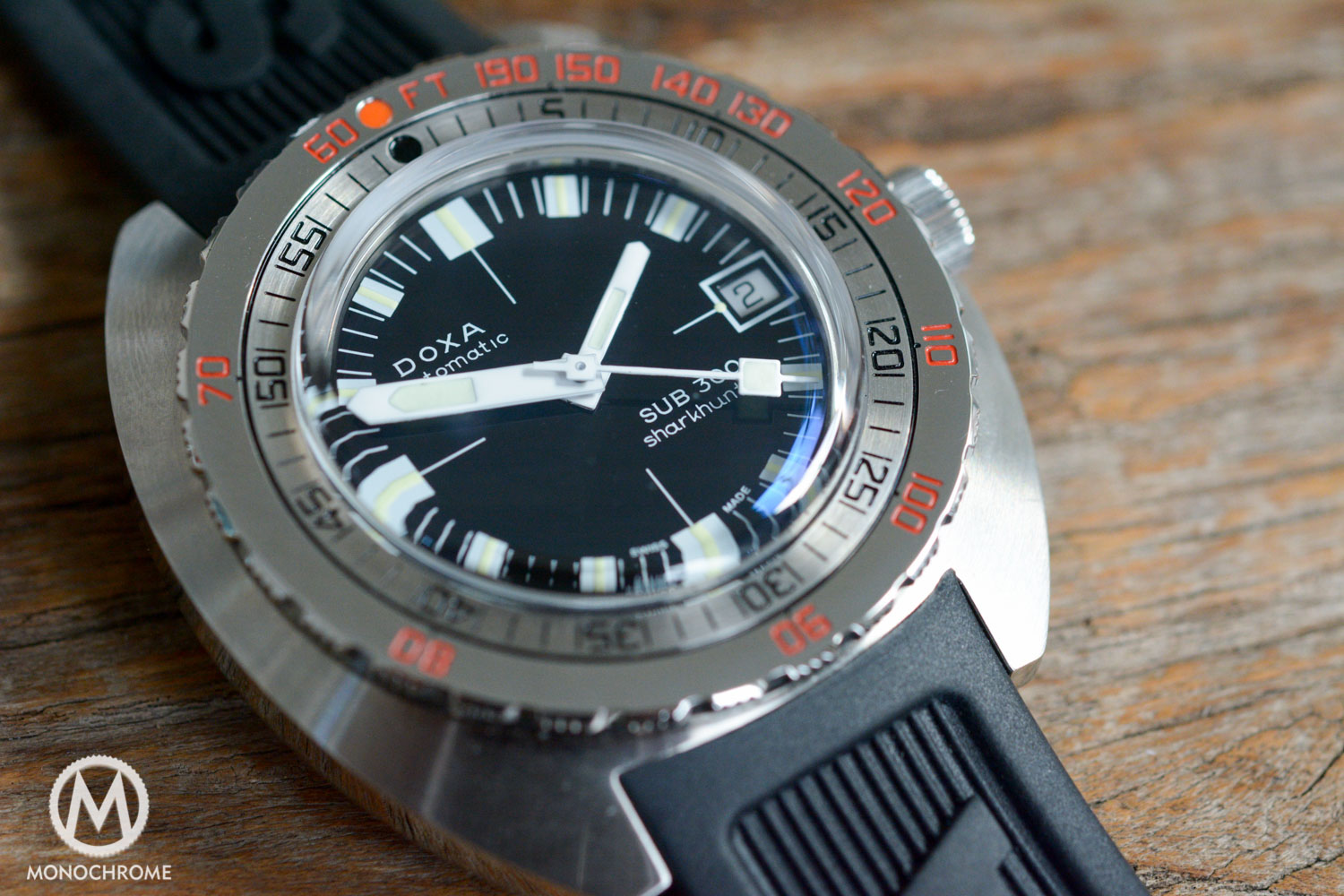
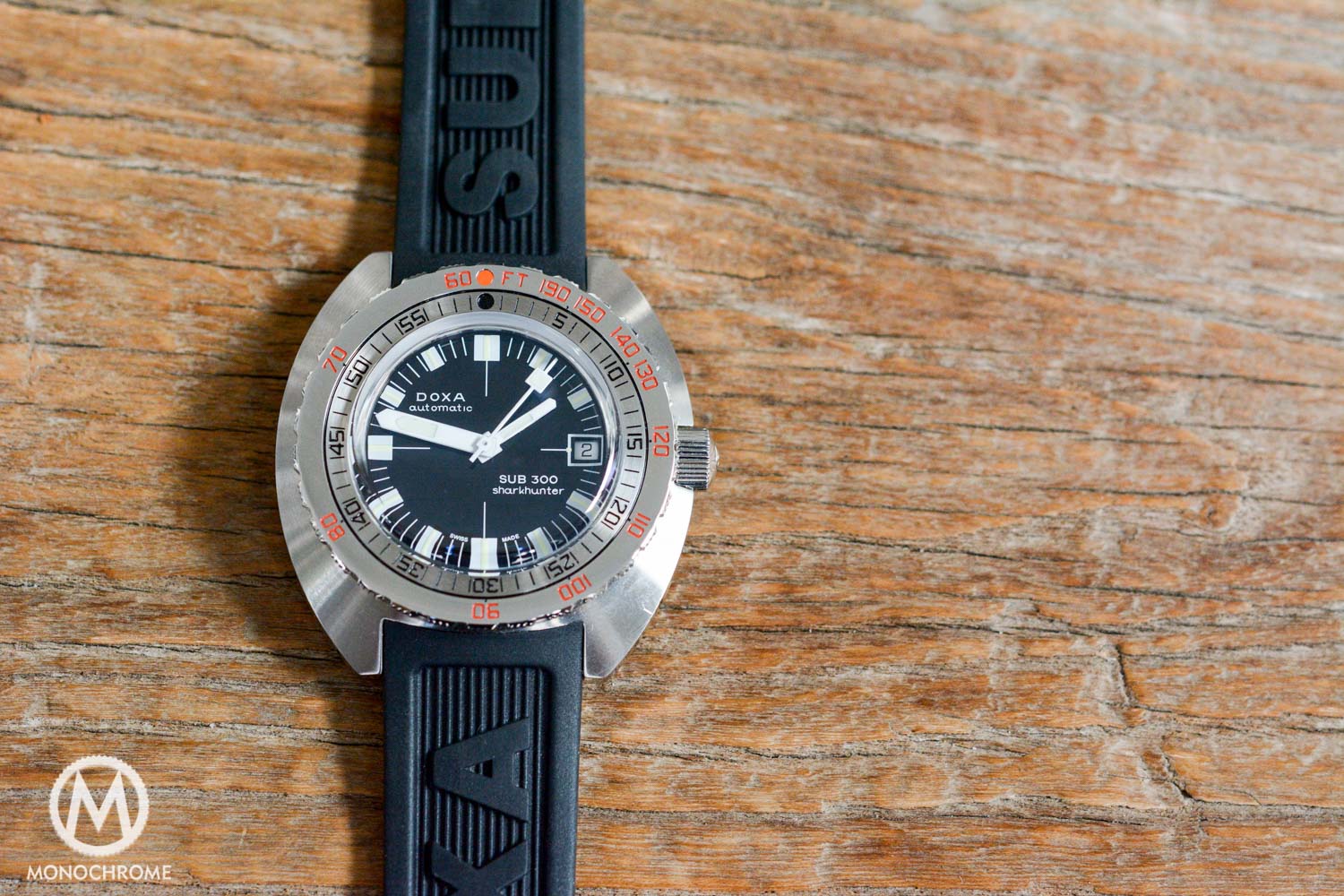
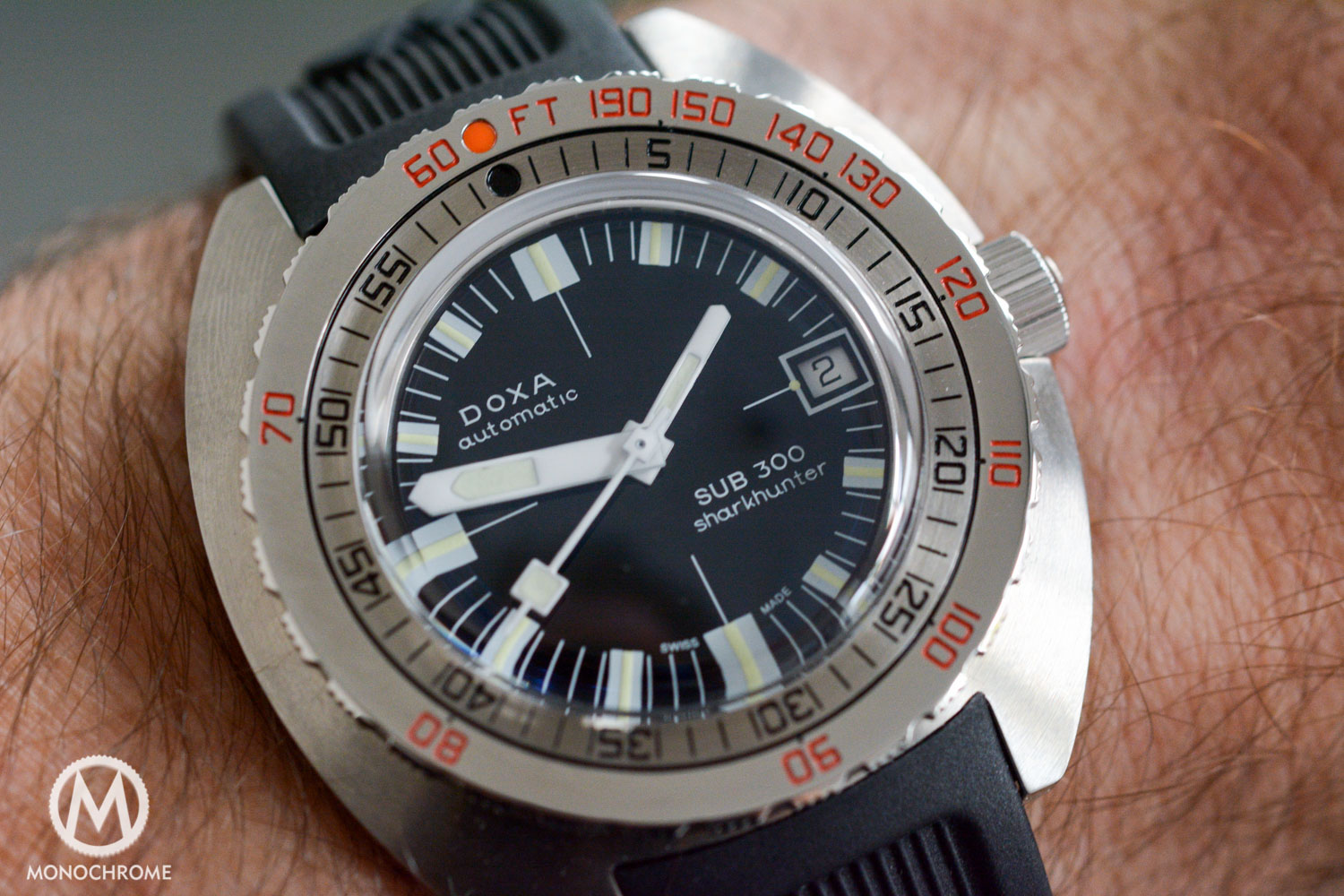



2 responses
Love Doxa! True heritage!
Very Impressed by the Quality of information supplied about this watch . It’s a classic gem to own.